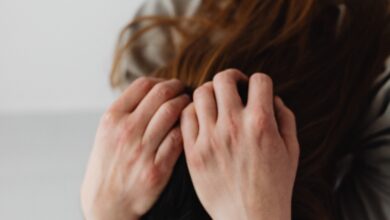the heart

heart disease
Cardiovascular diseases are the leading cause of death worldwide. In 2012, the number of deaths was estimated at 17.5 million, or 31% of total global mortality.
Pulmonary embolism
Pulmonary embolism is a migration of clots into the pulmonary arteries where they become trapped.
CVA (cerebrovascular accident)
A stroke is the blockage or rupture of a vessel carrying blood to the brain.
Heart failure
We speak of heart failure when the heart is no longer able to pump enough to ensure the blood flow necessary for all the body’s needs.
Venous thrombosis (or phlebitis)
Venous thrombosis or phlebitis is the formation of clots in the deep veins of the leg. There is a risk of clots rising in the inferior vena cava and then in the pulmonary arteries when the blood returns to the heart.
Angina pectoris (or angina)
Angina pectoris is characterized by oppressive pain that can be located in the chest, left arm and jaw.
Myocardial infarction (or heart attack)
Infarction is the partial destruction of the heart muscle. The heart is then no longer able to play its role as a pump and stops beating.
Pericarditis
Pericarditis is an inflammation of the pericardium due to infections: viral, bacterial or parasitic. Inflammation can also occur after more or less significant trauma.
Valvulopathies
Valvulopathy is an alteration of the functioning of the valves of the heart by various diseases which can modify the cardiac function.
Heart rhythm disorders (or cardiac arrhythmia)
Heart rhythm disorders are characterized by irregular, too slow or too fast heartbeats, without these rhythm changes being linked to a so-called “physiological” cause (physical effort, for example).
Cardiomyopathies
Cardiomyopathies are diseases that cause dysfunction of the heart muscle, the myocardium. This disease causes a decrease in the muscle’s ability to pump blood and eject it into the circulation.
heart defects
Birth defects of the heart are present at birth.




